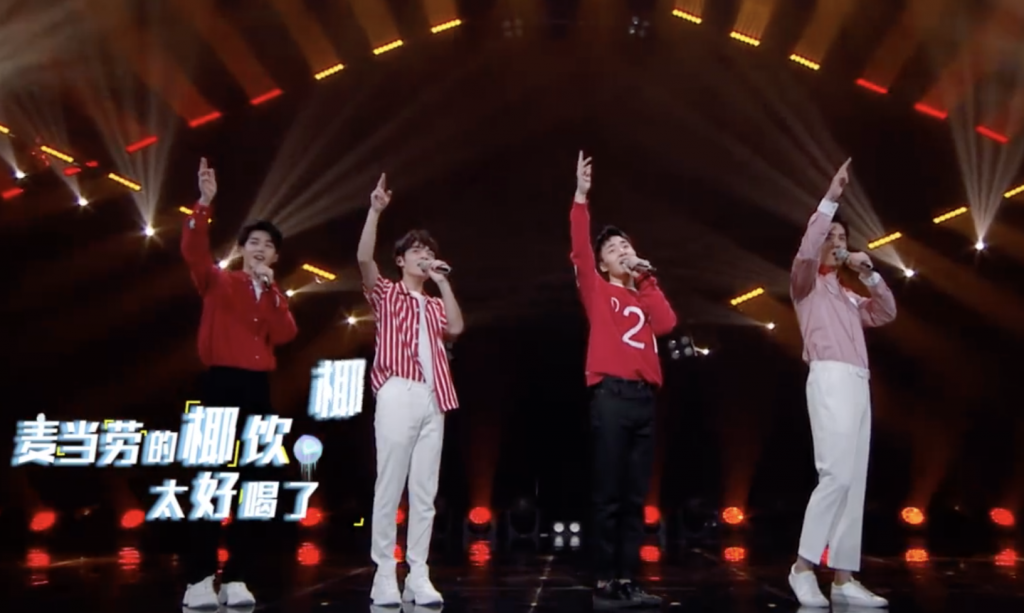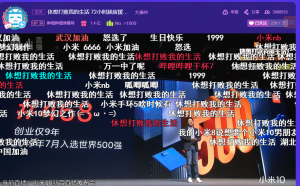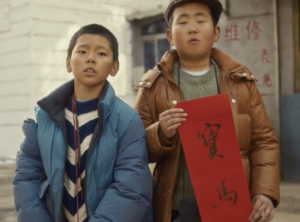
The “coconut flavor quartet”
McDonald’s has long sought to localize itself in the Chinese market, where it has competed for nearly three decades against Western fast-food leader KFC and the cultural preference of Chinese consumers for fried chicken over Big Macs. This summer saw the introduction of Coca-Cola chicken wings, building on previous efforts such as 2017’s chicken-based “Hip-Hop” snack box, created to satisfy the appetites of “Rap of China” viewers, and the Sichuan chicken burger.
Recently McDonald’s introduced a new line of iced coconut beverages, which it sought to market to Chinese youth through a musical collaboration with Hunan Satellite TV based on its popular talent competition “Super Vocal” (声入人心).
“Super Vocal,” which launched its second season on July 19, became one of the top-rated reality shows on Chinese television by finding a new niche in the crowded field of musical talent competitions. It showcases classically trained singers performing songs mainly drawn from opera and musicals, and popular contestants have built dedicated fan bases over the course of the series.
Implementation: In the new campaign video, a “coconut flavor quartet” of drinks is introduced by four contestants from the series performing a musical-theater style number that emphasizes the tonality of the Chinese language, playing on the word for coconut (椰 yē) with harmonizing of the four tones “yē, yé, yě, yè.” Each member of the quartet is associated with a different tone and accompanying catchphrase.
The musical style is a departure from the more common use of pop music and hip-hop in Chinese advertising, and is made possible by the strong IP underlying “Super Vocal.” This gives McDonald’s the opportunity to leverage the popularity of the singers and their large social media followings.
Social Media Activity: On Sina Weibo, the official accounts associated with McDonald’s and “Super Vocal” asked fans to choose their favorite singer from the quartet and offered a half-price discount on the featured coconut beverages. McDonald’s also promoted the video across China’s short video platforms, along with additional supporting content.
Results: The goal for McDonald’s was to reach young consumers born after 1995, a key demographic for Hunan Satellite TV, which ranks first among China’s provincial TV networks for coverage, reach, and retention. Unfortunately for the fast-food giant, while the campaign leveraged Hunan Satellite TV’s popular IP to create fresh buzz around new McDonald’s products in a distinctive manner, the longer-term social media response was muted as consumers who tried the drinks generally left tepid reviews of their taste.






